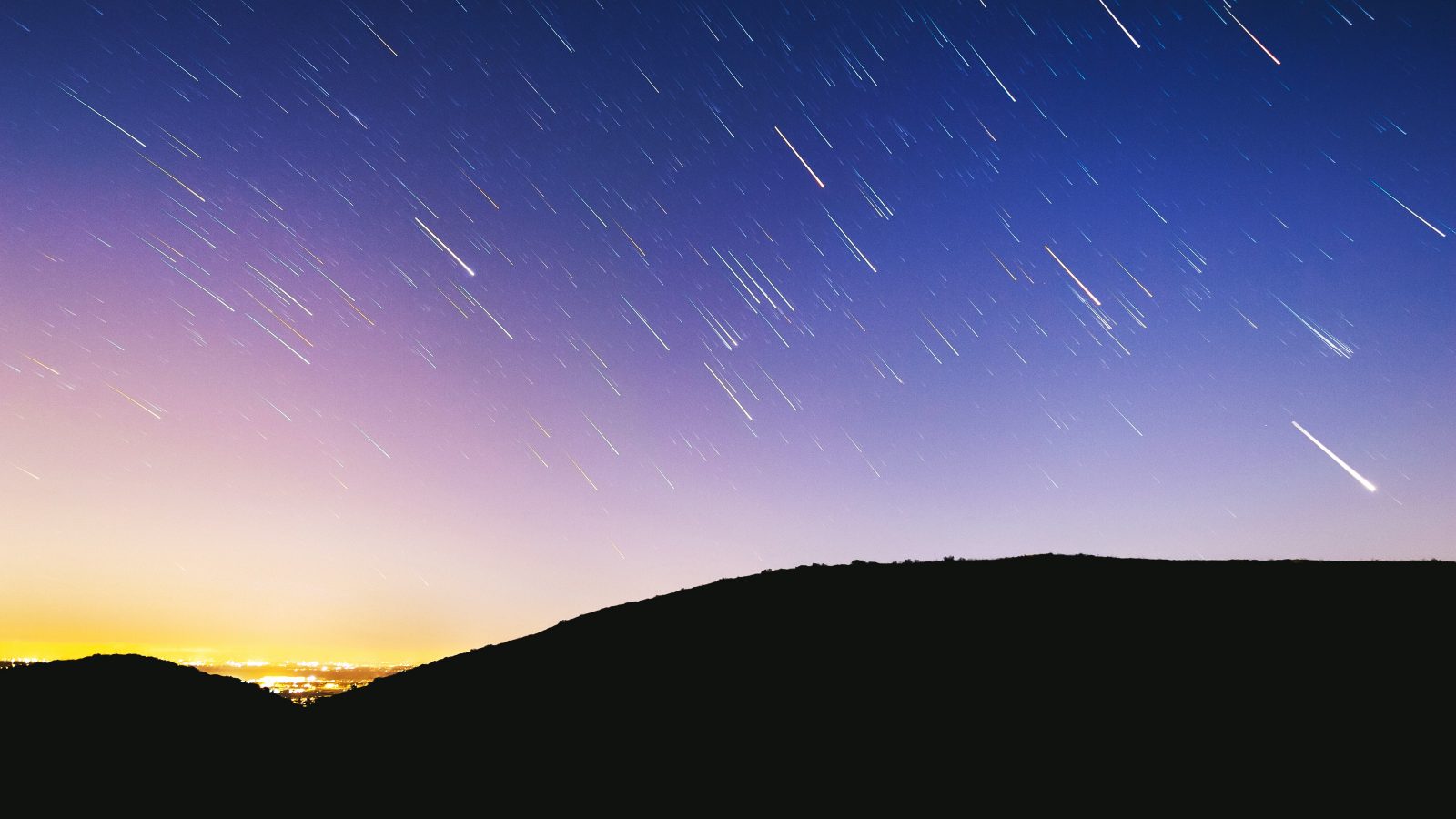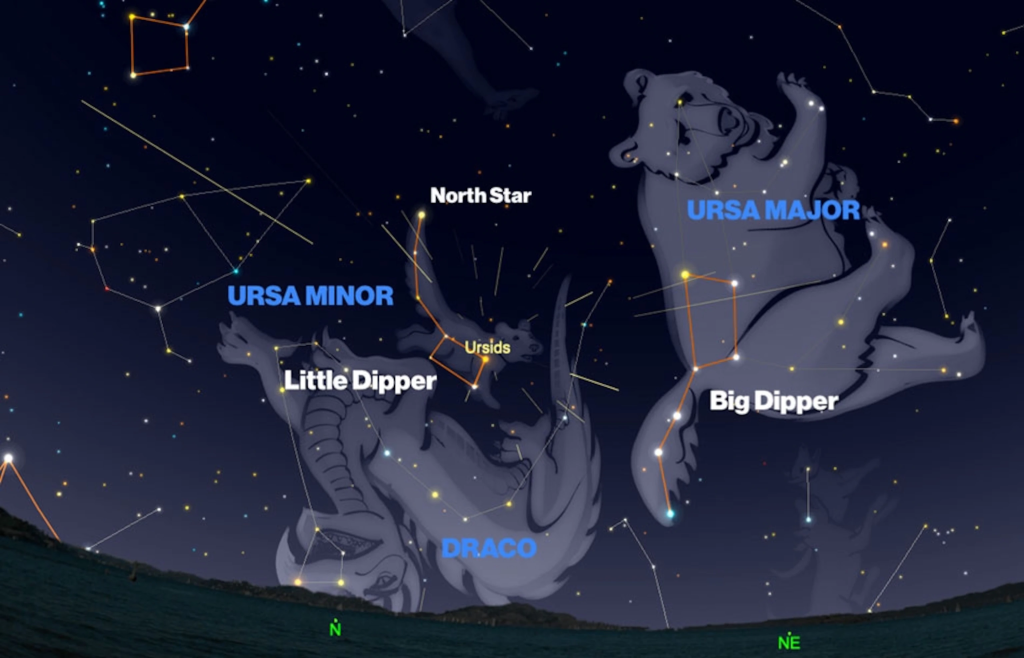
It’s Christmas week and also a good time to step outside and admire the sky for the peak of the annual Ursid meteor shower, which will grace the sky tonight. Here’s when, where, and everything you need to know.
The Ursids, which remain active up until December 26, tend to peak annually around the time. This year the peak will be late at night on December 21 and into the morning of December 22. Unfortunately, it may be hard to see due to an almost full moon – bad timing for an already minor meteor shower.
It’s considered a “low-key” shower because of the small number of meteors that can be seen (approximately 5 to 10 per hour), it’s also localized only to the Northern Hemisphere, according to EarthySky.org.
“If you look from a Northern Hemisphere location around the time of the solstice, you’ll find the Big Dipper and the star Kochab well up in the north-northeast at around 1 a.m. your local time. That’s about the time of night you’ll want to start watching this meteor shower,” EarthSky wrote on its website.
The shower is named the Ursids because the meteors seem to radiate from the direction of the constellation Ursa Minor, also known as the Little Bear, in the night sky.

The Ursids are a relatively new meteor shower. It was first observed around the start of the 20th century, as an amateur astronomer noticed they seemed to emulate from the star of Kochab – the brightest star in Ursa Minor.
Though this is a smaller shower in numbers, there have been a few times throughout history where stargazers have seen unexpected outbursts. In 1945 and 1986, approximately 100 meteors per hour took place, while in 1966 people saw a whooping 1,000 meteors per hour.
To locate Ursa Minor and give yourself the best chance of seeing a shooting star, I would recommend using any number of apps that track astronomical objects. Personally, I use Night Sky, which is free to download on the App Store and Google Play.
Don’t forget to tag @SpaceExplored in your photos, as we’ll be sharing all week!
Featured image credits: NASA/Bill Ingalls
FTC: We use income earning auto affiliate links. More.



Comments